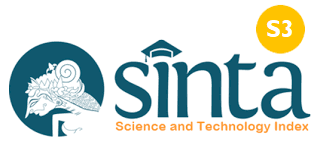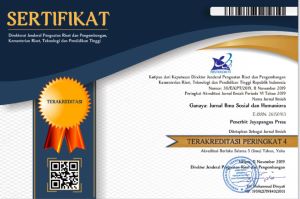Pelecehan Seksual Menurut Undang-Undang Nomor 12 Tahun 2022 Tentang Tindak Pidana Kekerasan Seksual Di Lingkungan Kampus Universitas Palangka Raya
DOI:
https://doi.org/10.37329/ganaya.v8i1.3875Keywords:
UU TPKS, Sexual Violence, Campus, Reporting Mechanisms, UPRAbstract
The enactment of Law Number 12 of 2022 on Sexual Violence Crimes (UU TPKS) aims to provide comprehensive protection for victims of sexual violence, including in higher education institutions. This study aims to evaluate the implementation of UU TPKS at the University of Palangka Raya (UPR), specifically assessing campus preparedness, the effectiveness of reporting mechanisms, the level of awareness among the academic community, and identifying socio-cultural challenges in its enforcement. A normative legal research approach was employed by analyzing relevant legal norms, regulations, and doctrines related to campus sexual harassment. The findings reveal that the reporting system for sexual violence at UPR remains suboptimal. Victims are often reluctant to report due to fears of social stigma, academic repercussions, and lack of trust in existing mechanisms. The level of awareness among students and lecturers regarding UU TPKS and its protective measures is still low, further hindering the effective enforcement of the law. Socio-cultural barriers, such as patriarchal norms and victim-blaming, exacerbate the situation. This study concludes that strengthening a secure and confidential reporting system is crucial, accompanied by increased awareness through continuous socialization programs. Collaboration with external institutions is essential to support victims and create an inclusive, victim-oriented system. Additionally, the university must address cultural barriers by fostering a transformation toward an academic culture free from sexual violence. Effective implementation of UU TPKS requires a holistic approach integrating law enforcement, institutional support, and cultural change to create a safe and just campus environment for the entire community.
References
Almalik, S. (2022). Menelaah Animo Seksual Sebagai Pencegahan Kekerasan Seksual di Kampus Perspektif Sigmund Freud dan Teori Seksual. Prosiding Konferensi Gender dan Gerakan Sosial, 1(01), 160-192.
Alpian, R. (2022). Perlindungan Hukum Pidana Terhadapa Tindak Kekerasan Seksual Di Dalam Institusi Perguruan Tinggi. Lex Renaissance, 7(1), 69-83.
Antoni, H., Hosnah, A. U., & Simanjuntak, A. C. A. (2024). Perlindungan Hukum bagi Korban Kekerasan Seksual pada Anak Berdasarkan Undang-Undang Nomor 12 Tahun 2022 tentang Tindak Pidana Kekerasan Seksual. Logika: Jurnal Penelitian Universitas Kuningan, 15(02), 235-247.
Gibran, R. A., Primananda, M. A., Syahir, F. H., Firdaus, M. B., & Prasetyo, H. (2024). Optimalisasi Satgas PPKS UPN “Veteran” Jakarta dalam Menciptakan Lingkungan Perguruan Tinggi Yang Aman. Causa: Jurnal Hukum dan Kewarganegaraan, 4(12), 71-80.
Hamid, A. (2022). Perspektif Hukum Terhadap Upaya Antisipasi Dan Penyelesaian Kekerasan Seksual Di Perguruan Tinggi. Al’adl: Jurnal Hukum, 14(1), 1-10.
Hidayat, M. S., Nugraha, A., Wiguna, M. N., & Supriyono, S. (2023). Pelecehan Seksual Di Lingkungan Mahasiswa. Jurnal Kajian Gender dan Anak, 7(1), 32-44.
Irawan, A. D. (2022). Pelecehan Seksual Terhadap Korban Ditinjau Dari Permendikbud Nomor 30 Tahun 2021. Media of Law and Sharia, 3(2), 107-123.
Jailani, M. (2020). Tinjauan Socio Legal Kebijakan Pencegahan Dan Pennaganan Kekerasan Seksual (PPKS) Di Perguruan Tinggi Kegamaan Islam (PTKI)-SK Dirjend Pendis Kemenag RI-Draft Peraturan Rektor Tentang PPKS. JGSIMS: Journal of Gender and Social Inclusion in Muslim Societies, 1(2).
Kirana, T. R., & Listyani, R. H. (2023). Analisis Pengalaman Mahasiswa Laki-laki Sebagai Korban Pelecehan Seksual. Paradigma, 12(2), 241-250.
Marfu'ah, U., Rofi'ah, S., & Maksun, M. (2021). Sistem Pencegahan Dan Penanganan Kekerasan Seksual Di Kampus UIN Walisongo Semarang. Kafaah: Journal of Gender Studies, 11(1), 95-106.
Muchfian, K. (2022). Kewenangan KEMENKOMINFO dalam Memblokir Akses Konten Asusila di Media Sosial Twitter (Doctoral Dissertation, Universitas Islam Negeri Maulana Malik Ibrahim).
Paludi, M. A. (Ed.). (1996). Sexual Harassment On College Campuses: Abusing the Ivory power. New York: SUNY Press.
Refika, F., Musa, M., & Susanti, H. (2023). Analysis of the Influence of Power Relations anf Patriarchy in the Phenomenon of Sexual Violence in Universities in A Human Rights Perspective. jurnal UIR Law Review, 7(1), 57-88.
Sagala, R. V. (2020). Ketika Negara Mengatur Kekerasan Seksual. Bogor: Guepedia.
Tiara, S., & Pratiwi, M. R. (2018). Proses Pendampingan Melalui Komunikasi Teurapetik Sebagai Upaya Pemulihan Psikologis Korban Perkosaan. An-Nida: Jurnal Komunikasi Islam, 10(2).
Wibisono, D. P. P. (2022). Upaya Polri Dalam Menanggulangi Tindak Pidana Pencurian Dengan Kekerasan Berdasarkan Pasal 365 Kitab Undang-Undang Hukum Pidana (KUHP). Jurnal Hukum Media Justitia Nusantara, 12(1), 146-188.
Downloads
Published
How to Cite
Issue
Section
License
Copyright (c) 2025 Siti Amalia Rahmadani, Rollys Suriani, Nuraliah Ali (Author)

This work is licensed under a Creative Commons Attribution-ShareAlike 4.0 International License.
An author who publishes in the Ganaya : Jurnal Ilmu Sosial dan Humaniora agrees to the following terms:
- Author retains the copyright and grants the journal the right of first publication of the work simultaneously licensed under the Creative Commons Attribution-ShareAlike 4.0 License that allows others to share the work with an acknowledgement of the work's authorship and initial publication in this journal
- Author is able to enter into separate, additional contractual arrangements for the non-exclusive distribution of the journal's published version of the work (e.g., post it to an institutional repository or publish it in a book) with the acknowledgement of its initial publication in this journal.
- Author is permitted and encouraged to post his/her work online (e.g., in institutional repositories or on their website) prior to and during the submission process, as it can lead to productive exchanges, as well as earlier and greater citation of the published work (See The Effect of Open Access).
Read more about the Creative Commons Attribution-ShareAlike 4.0 Licence here: https://creativecommons.org/licenses/by-sa/4.0/.








